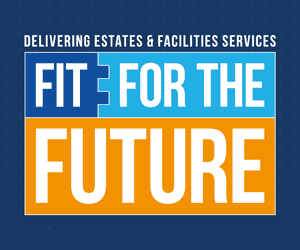The Health Secretary Sajid Javid has set out his priorities for reform of the health and social care system, which places prevention at its heart. The three ‘Ps’ of the reform agenda are listed as Prevention, Personalisation and Performance, with a fourth ‘P added almost as an afterthought, ‘People’.
The speech was delivered at the Royal College of Physicians yesterday (March 8), during which Mr Javid stated: “We must now put the full power of the NHS behind prevention. Every part of the NHS has to play its role, and every part of the NHS stands to benefit.”
The agenda on prevention will take shape at every level of the NHS. Primary Care will be particularly important, as will Community Diagnostic Centres, which are more accessible to, and convenient for patients, and are expected to play a vital role in identifying risks and enabling early intervention. These centres have already delivered more than 500,000 extra tests in their first full year of operation, and it is anticipated they will provide at least one and a half million in their second year.
The Health Secretary also emphasised access to personalised care with personal health budgets, and outlined a target for 200,000 people to have a personal health budget by 2024, describing this as: “a way to put power back in people’s hands.” He added: “By 2030, I intend for personalisation to become the norm and personal health budgets to be an increasing part of that. Taken together, I intend for this to be one of the biggest transfers of power and funding in decades: from the state to the individual and their family.”
A new ‘Right to Choose’ will be offered immediately to long-waiters, which will give them the option to choose an alternative provider. This could be a nearby Trust, or one that is further away, in which case transport and accommodation would be covered. It could also be the independent sector. Patients waiting for more than two years: “will be contacted by the end of this month,” to discuss an offer of alternative provisions.
More digital transformation is also expected to improve performance and efficiency. This Spring will see the publication of a new and comprehensive Digital Health and Care Plan, which will include social care for the first time; the NHS App will be: “the new front door to the NHS,” and digital revolution will be expected to both transform the patient experience and improve the daily experience of those working within the NHS.
Quite early on in the lengthy speech the Health Secretary referenced the limitations of investment, saying that: “You can build a computer that’s ten thousand times more powerful, but you can’t make a doctor treat ten thousand times more patients.” Whilst this might be an argument against looking to money as the panacea to all problems, it is surely also an argument for ensuring there are sufficient staff to provide the services and healthcare that the country requires. However, it wasn’t until the final few minutes of the speech that Mr Javid turned to the people, saying this was “probably the most crucial ‘P’ of all.”
Addressing the 110,000 vacancies across the NHS is a clear priority that service providers, professional associations, unions and think tanks have been calling for since before the pandemic struck but which has yet to materialise. Yesterday’s speech promised only: “We also need – and we will have – a proper long-term workforce plan, so we can build our workforce and skills, and take tougher action on things like racism, sexism and bullying.”
Chris Hopson, Chief Executive of NHS Providers responded, welcomed the support for the NHS and the focus on prevention. He added: “The Secretary of State was right to pay tribute to the NHS workforce but the government still needs to set out the concrete action it will take to tackle the 110,000 staff vacancies and provide a sustainable workload for the workforce. These staffing gaps are putting significant pressure on quality of care and patient safety.
“It is vital the government commits to a robust system for long-term workforce planning so that the positive future the Secretary of State outlined for the NHS today can become a reality.”










